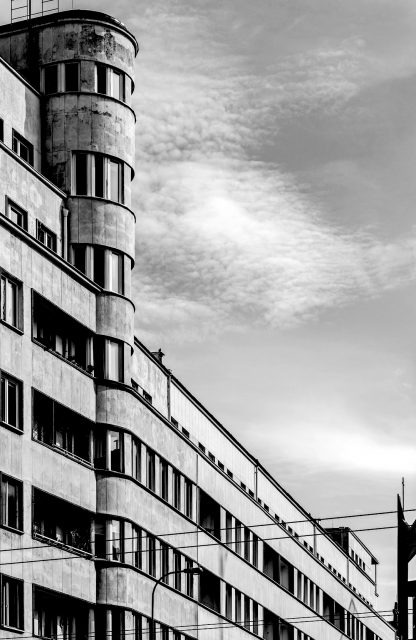The interwar period was the time when Gdynia was transformed from a fishing village into the most modern port on the Baltic Sea and a city famous throughout Poland. The expansion of Gdynia in the 1920s and 1930s made it a true pearl of modernism.
Only in 1921, shortly after its accession to Poland, Gdynia was inhabited by 1,268 residents. Just five years later, this number grew to 12,000, and shortly before the outbreak of World War II it exceeded 127,000 people. This shows how quickly the city developed, driven by investments in the seaport.
The increase in the number of inhabitants had to be followed by the expansion of the infrastructure, coinciding with the development of modernism, the style of European architecture of the 1920s and 1930s. Its assumptions, based on a combination of functionality and style, perfectly complemented the concept of Gdynia as a modern and dynamic place. The architects who built the city did not cling to the solutions popular in Europe, but enhanced the designs with maritime references reflecting the port character of Gdynia. The buildings became so unique in the scale of the continent that we can confidently call this style Gdynia modernism. The direction itself developed as a response to the changing needs of residents. The existing architecture was not able to meet the requirements in terms of hygiene, aesthetics and living space. It was necessary to break away from previous trends and open a new era of industrial design.
In Europe, several trends were distinguished: German Bauhaus rationalism created by Walter Gropius, Mendelsohn’s expressive trend, Le Corbusier’s functionalism in France and the Amsterdam neoplasticism, popular in Belgium and the Netherlands. The modernist current, interrupted by the war and socialism, flourished again in the 1950s, and its characteristic elements can be found in architecture even in the 1980s.
In Gdynia, state funds created an opportunity for a modern urban and port infrastructure. The developing port attracted private capital and entrepreneurs, and the city grew at a remarkable rate. In the 1930s, the Gdynia City Centre and the most important public buildings were built. The frontages of cubic tenement houses and streamlined buildings inspired by ship architecture appeared.
A reminder of this period are numerous examples of modernist industrial, port and residential buildings, including villas. On the map of Gdynia’s modernist pearls we can highlight, among others, the ZUS Office Building (ul. 10 lutego 24), where the City Hall is currently located, the building of the District Court (pl. Konstytucji 5), “Bankowiec” BGK Housing Complex (ul. 3 Maja 27/31), the Complex of Municipal Market Halls (ul. Wójta Radtkego 38), Dom Żeglarza Polskiego (al. Jana Pawła II 3), Dworzec Morski (ul. Polska 1), currently the Emigration Museum, Grain elevator, Hundsdorf House (ul. Starowiejska 7), or the beautiful Villa of Countess Magdalena Łosiowa (ul. Korzeniowskiego 7). The magnificent theatre building, designed by the architects Daniel Olędzki and Józef Chmiel from the Gdańsk University of Technology, is also worth mentioning. Each of these buildings has not only a unique style and character, but also carries the history of “a city from the sea”, a realized dream of a modern port and a place to live.
AUTHOR: Agata Karolina Lasota
https://alebank.pl/modernizm-w-gdyni-unikalne-nawiazania-marynistyczne/?id=304904&catid=25927








